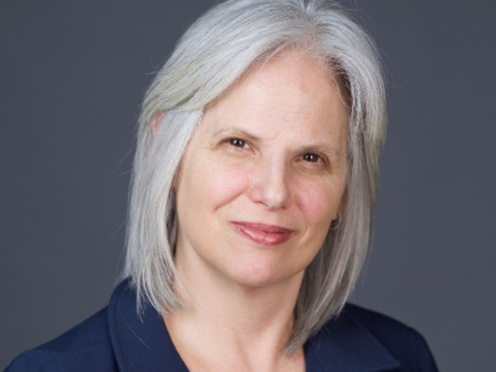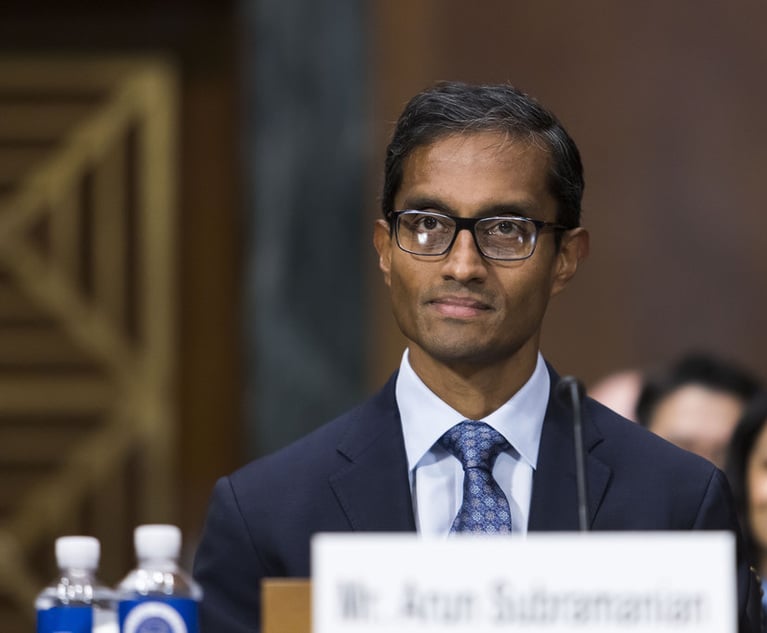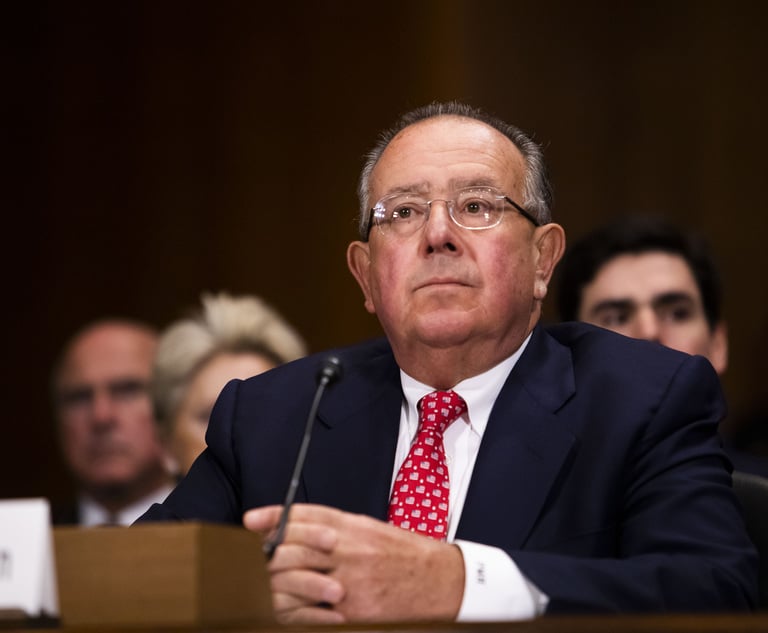Don't Let a Crisis Go to Waste: Time To Explore Expansion of ODR for ADR
There has never been a better time to experiment both in the courts and in the private sector to expand the use of Online Dispute Resolution (ODR) for ADR.
March 17, 2020 at 11:45 AM
12 minute read
 Linda Gerstel
Linda Gerstel
There has never been a better time to experiment both in the courts and in the private sector to expand the use of Online Dispute Resolution (ODR) for ADR. Courts and private ADR providers will soon be facing a deluge of coronavirus claims that will require a need to reevaluate even earlier successful mass disaster models that American Arbitration Association's (AAA) administered in the wake of Hurricanes like Sandy, Katrina, Rita and Andrew. I am not suggesting that we jump to algorithms and robots or that Alexa takeover your mediation or arbitration practice. Yet, broadening the use of technology-assisted ADR such as video conferencing, mobile apps and electronic meeting rooms will be necessary. It has already happened in a few courts and in a limited fashion in the private ADR sector. Increasing ODR in ADR increases access to justice—both in terms of cost, accessibility and geographic or logistical challenges posed by conventional mediation. Web-based video conferencing delivers traditional style mediation with mediators, lawyers and clients participating "live" in virtual video conference rooms. The parties and mediator still are able to retain a great deal of flexibility to design a process that caters to the parties' needs. For example, a chat room feature can be used for one-on- one correspondence with the mediator. Web-based conferencing also offers screen sharing tools to facilitate the sharing of documents or potential pieces of evidence or a potential term sheet for a successful mediation. Clearly, any ODR system has to be able to be accessible to individuals with disabilities, including effective mechanisms for the blind, deaf and the hard of hearing.
There are two ways an ODR program can be implemented, either through requiring ODR for certain types of claims (presumptive ODR) or offering ODR as an option. Like presumptive ADR, which was recently rolled out in the state courts, Presumptive ODR for ADR will need carve-outs for opt outs in order to get all stakeholders on board, court administrators, private ADR providers, litigants and their counsel. The Joint Technology Committee of the National Center for State Courts concluded a presumptive ODR process, that only allows the parties to opt-out not in, is the best mode to ensure success of the ODR program; establishing a presumptive ODR process as opposed to a voluntary one will ensure that people actually take advantage of the program and that it won't just be utilized by those who feel they would be at an advantage over the other party by selecting ODR over an in-person option. With all due respect to Lin-Manuel Miranda in Hamilton, "the room where it happened" nowadays in mediation and even in arbitration can be virtual.
There are a number of cases that would benefit from pilots for a model of presumptive ODR for ADR. It would be particularly appropriate to pilot a program for the increasing caseload of Americans with Disabilities Act (ADA) matters filed in the federal courts. In a recent ADA case that I mediated, the plaintiff was wheelchair bound and could have easily appeared by video conference. Potential pilot programs for certain monetary threshold amounts in controversy would also benefit from expanding ODR platforms. The federal court jurisdictional amount has hardly kept up with the increases in hourly rates, so careful consideration should be given when setting the threshold for presumptive ODR in ADR. Success in mediation often requires multiple sessions. Virtual caucusing over days and sometimes weeks, allows offers to "sink in" so they have time to marinate. To use a culinary analogy, they need time to simmer, and some may even need to be placed in a slow cooker overnight. The case for increasing ODR for ADR is more compelling now than ever.
There are four prongs to support increasing ODR in ADR.
First, at this very moment in time, people have been forced to engage in remote learning and working. People have experienced the benefits and flexibility of working remotely. Even I, as an adjunct professor of ADR, was at first dubious as to whether the zoom application could really allow for the interactive nature of an ADR class with nearly 20 students. I was proven wrong even though the first session had few hiccups. The next day, my co-teacher, John Feerick, former Dean of Fordham Law—my favorite octogenarian—came up to speed in using zoom to participate in an arbitration panel. The recent health concerns surrounding social distancing as a method to mitigate the spread of coronavirus has led to cancellation of events; educational institutions have moved to remote learning; and in some limited instances, some mediators have resorted to ODR instead of conventional mediation. As a practical matter, increasing the use of ODR saves attorneys and clients travel costs (sometimes billable), thereby increasing access to justice for plaintiffs with limited means to pay counsel fees and even for small- and medium-sized businesses that are sensitive to their bottom line. There's no indication that telephonic/videoconferencing mediations decrease settlement rates despite a tendency to believe that body language and face-to-face meetings often help parties get over settlement hurdles. For some, there is a sense of disbelief that virtual meetings can adequately provide a meaningful substitute. For some reluctant litigants, a promotional campaign may be necessary. Exhibit A would be a trip to the Second Circuit.
Second, the model has already been working successfully in practice. The Second Circuit, has already been relying on video conferencing and telephonic mediations. Mediators in the Second Circuit Civil Mediation Panel (CAMP), including me, have been using limited ODR since the inception of the program for mediations where parties or their counsel are located more than 40 miles from Manhattan. In fact, mediators selected for an appeal have the chance to review the decision below and use their discretion in deciding whether a telephonic mediation or an in-person mediation should be ordered. In cases even after I selected a telephonic or virtual mediation, I often consult with the parties in pre-mediation screening calls to determine whether they would prefer an in- person mediation and believe the chance of success may require getting decisionmakers in the room. As many courts have taken extra measures of precautions in the past month, CAMP amended its policies for March to require that all mediations—regardless of the parties or their counsel's distance from Manhattan—take place by telephone.
Third, the introduction in state courts of Presumptive ADR this year will open a floodgate in the number of mediations that will take place once the system has been fully implemented. Administrators of various state court panels have been posting on ADR listservs that they need to recruit more mediators for their rosters. The need for volunteers in outer boroughs may be greater than the supply of mediators willing to travel to the Bronx or Westchester. The ADR presumptive rules now provide for a mediator to offer 90 minutes on a pro bono basis and a reduced charge for any hours thereafter with a cap on fees. While the mediators are not technically fully volunteers, because there is a potential if mediations become lengthy for earning some discounted rate, most will, in effect, be volunteering. Many mediators are already working in a volunteer capacity or reduced paid scale on many other rosters. Court mediators are not paid for their travel time but could be able to take on a greater caseload if they could conduct (on a presumptive basis) telephonic/video conference mediation. An impending surge in filing of claims and mandatory mediations might be better served if parties could participate by conferencing. In the private sector, for example, under the AAA expedited procedures, even arbitrations under monetary thresholds of $75,000 have been taking place, with the parties' consent, telephonically without the need for a face-to-face platform. Reconsidering opportunities to expand ODR for ADR in courts and ADR in the private sector will soon be critical in managing a new wave or a mass filing of claims related to the coronavirus.
Finally, the court mediation programs and ADR programs in the private sector have been nimble enough to respond to instances of a new onslaught of cases by either developing mandatory mediation programs or creating special programs to expedite procedures to handle such claims. By way of example, the Eastern District of New York as well as the AAA responded to Super Storm Sandy by creating a program to manage mandatory mediation of those claims. Those programs were incredibly successful, not only in relieving the court dockets but also in the settlement rates that accompanied those claims. Super Storm Sandy was the first automatic referral program enacted by the Eastern District and the publicly available data indicates nearly an 80% settlement rate. The next largest category of claims in the mediation program were Fair Labor Standards Act (FLSA) matters, where settlement rates of 60% or better are common.
The Southern and Eastern Districts have often responded by implementing new mediation pilot programs with discovery protocols where mass filings of claims threatened to be a serious drain on the court's resources. The FLSA pilot program was one where certain selected judges in the Southern District directed mandatory mediation for all their FLSA cases, while others exercised their discretion in determining which FLSA cases would be part of the program. For example, in the Southern District, FLSA grew from 271 cases in 2017 to 332 cases in 2018 to a staggering 448 cases in 2019. ADA cases were just slightly behind, moving from 53 to 192 to 330 over the same span of years. Outside of New York, the ADA statistics are equally staggering with well over 10,000 cases across the United States in 2019. Since October of last year, one serial filer who has been responsible for filing over 300 ADA claims has been charged with filing fraudulent claims. Most of these ADA cases concern inaccessible physical facilities or websites as well as a recent spate of over 240 braille gift card matters in the Eastern and Southern Districts. Between the skyrocketing FLSA docket, an ever increasing ADA docket, coupled with what will be an enormous tax on the system for mediator "volunteers" in the new Presumptive ADR model, our collective experience in the past month with working remotely because of related health precautions and, more importantly, the successful and longstanding CAMP model of video/telephone conferencing, should lead to immediate consideration of a presumptive limited ODR pilot in our courts.
State courts have already started to respond to coronavirus in a way that guarantees that in addition to the potential onslaught of virus-related claims, there will be a backlog of cases, which will make their dockets even harder to manage. This is true for the New York State Court system, which released a memo on March 13, 2020, stating that certain aspects of civil trials should be conducted remotely via appearance through Skype or telephone. Many mediators moved fairly swiftly to embrace zoom and Skype. Although this is a response to an unprecedented crisis with an unclear deadline in sight, this is a positive sign for the development of ODR for ADR and should be incorporated in our judicial system and private panels once the crisis subsides and a "new normal" resumes.
Even this limited mode of ODR may not work across the board for every conceivable case, so carveouts and opt-outs will be necessary, for example, where a litigant is not represented by counsel. But, it can and should begin with pilot programs for ADA matters and for low monetary threshold cases. Moreover, it is not hard to expect that the coronavirus itself might lead to a deluge of cases that would eclipse the volume of Sandy claims. Here, the AAA and other private ADR providers may need to repeat the public private partnership that successfully handled the Sandy claims.
Increasing options for video conferencing may also have additional collateral benefits for the ADR. It would offer the possibility of allowing law schools to participate through clinics, adding to an army of necessary volunteers. Mentoring opportunities can more easily fit within a student's schedule and at the same time help with the efforts in the ADR community to increase diversity.
As the saying goes, necessity is the mother of invention—and this has certainly been true in the field of ADR. Plato, the ancient Greek philosopher, could hardly have been thinking of increasing ODR techniques in ADR. It should not take a pandemic for us to realize that video conferencing as a presumptive ADR model can help us to manage the increasing caseload that the recently enacted presumptive ADR has in store for us as well as the plethora of FLSA, ADA and low monetary threshold matters that wind their way through our judicial system on a daily basis. The likely avalanche of cases that may result from coronavirus-related claims is a good reason to start implementing more ODR for ADR.
Linda Gerstel is a full time neutral at GerstelADR PLLC and is a member of various court panels as well as private panels, including the AAA Large Complex Commercial Panel, the ICDR and an Adjunct Professor of ADR at Fordham University Law School. Kayla Epstein, a 3L at Benjamin N. Cardozo School of Law, assisted in the preparation of this article.
NOT FOR REPRINT
© 2025 ALM Global, LLC, All Rights Reserved. Request academic re-use from www.copyright.com. All other uses, submit a request to [email protected]. For more information visit Asset & Logo Licensing.
You Might Like
View All
Decision of the Day: Judge Dismisses Defamation Suit by New York Philharmonic Oboist Accused of Sexual Misconduct

Private Equity Giant KKR Refiles SDNY Countersuit in DOJ Premerger Filing Row
3 minute read
Decision of the Day: Judge Rules Brutality Claims Against Hudson Valley Police Officer to Proceed to Trial

Skadden and Steptoe, Defending Amex GBT, Blasts Biden DOJ's Antitrust Lawsuit Over Merger Proposal
4 minute readTrending Stories
- 1Lawyers' Phones Are Ringing: What Should Employers Do If ICE Raids Their Business?
- 2Freshfields Hires Ex-SEC Corporate Finance Director in Silicon Valley
- 3Meet the SEC's New Interim General Counsel
- 4Will Madrid Become the Next Arbitration Hub?
- 5‘Ripe for SCOTUS’: Ruling Creates Circuit Split on NLRB’s Expanded Monetary Remedies
Who Got The Work
J. Brugh Lower of Gibbons has entered an appearance for industrial equipment supplier Devco Corporation in a pending trademark infringement lawsuit. The suit, accusing the defendant of selling knock-off Graco products, was filed Dec. 18 in New Jersey District Court by Rivkin Radler on behalf of Graco Inc. and Graco Minnesota. The case, assigned to U.S. District Judge Zahid N. Quraishi, is 3:24-cv-11294, Graco Inc. et al v. Devco Corporation.
Who Got The Work
Rebecca Maller-Stein and Kent A. Yalowitz of Arnold & Porter Kaye Scholer have entered their appearances for Hanaco Venture Capital and its executives, Lior Prosor and David Frankel, in a pending securities lawsuit. The action, filed on Dec. 24 in New York Southern District Court by Zell, Aron & Co. on behalf of Goldeneye Advisors, accuses the defendants of negligently and fraudulently managing the plaintiff's $1 million investment. The case, assigned to U.S. District Judge Vernon S. Broderick, is 1:24-cv-09918, Goldeneye Advisors, LLC v. Hanaco Venture Capital, Ltd. et al.
Who Got The Work
Attorneys from A&O Shearman has stepped in as defense counsel for Toronto-Dominion Bank and other defendants in a pending securities class action. The suit, filed Dec. 11 in New York Southern District Court by Bleichmar Fonti & Auld, accuses the defendants of concealing the bank's 'pervasive' deficiencies in regards to its compliance with the Bank Secrecy Act and the quality of its anti-money laundering controls. The case, assigned to U.S. District Judge Arun Subramanian, is 1:24-cv-09445, Gonzalez v. The Toronto-Dominion Bank et al.
Who Got The Work
Crown Castle International, a Pennsylvania company providing shared communications infrastructure, has turned to Luke D. Wolf of Gordon Rees Scully Mansukhani to fend off a pending breach-of-contract lawsuit. The court action, filed Nov. 25 in Michigan Eastern District Court by Hooper Hathaway PC on behalf of The Town Residences LLC, accuses Crown Castle of failing to transfer approximately $30,000 in utility payments from T-Mobile in breach of a roof-top lease and assignment agreement. The case, assigned to U.S. District Judge Susan K. Declercq, is 2:24-cv-13131, The Town Residences LLC v. T-Mobile US, Inc. et al.
Who Got The Work
Wilfred P. Coronato and Daniel M. Schwartz of McCarter & English have stepped in as defense counsel to Electrolux Home Products Inc. in a pending product liability lawsuit. The court action, filed Nov. 26 in New York Eastern District Court by Poulos Lopiccolo PC and Nagel Rice LLP on behalf of David Stern, alleges that the defendant's refrigerators’ drawers and shelving repeatedly break and fall apart within months after purchase. The case, assigned to U.S. District Judge Joan M. Azrack, is 2:24-cv-08204, Stern v. Electrolux Home Products, Inc.
Featured Firms
Law Offices of Gary Martin Hays & Associates, P.C.
(470) 294-1674
Law Offices of Mark E. Salomone
(857) 444-6468
Smith & Hassler
(713) 739-1250






